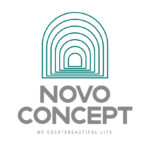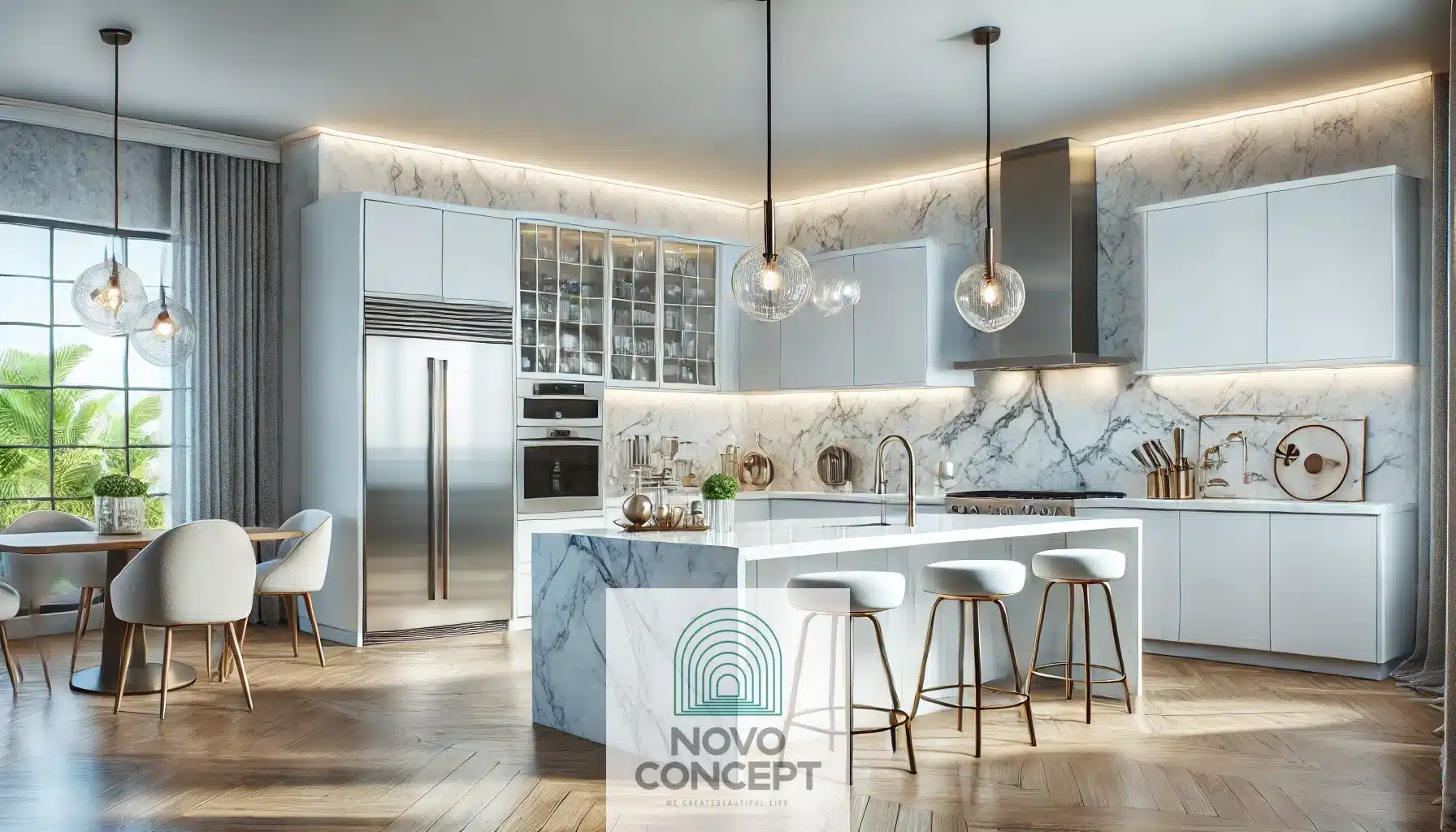Embarking on a home remodeling project is an exciting yet challenging venture that often requires significant financial planning. Whether you’re transforming your kitchen, modernizing your bathroom, or adding a home office, understanding your financing options is critical. Here is a comprehensive guide from Novo Concept to help you navigate the financing process and make informed decisions.
Understand Your home remodel Financing Options
Financing a remodel can be overwhelming, especially with various options available. Each has its advantages, limitations, and suitability for different project sizes and goals. Here are the primary methods to finance your home remodel:
- Home Equity Loans
- Overview: This option allows homeowners to borrow against the equity in their homes. Equity is calculated as the difference between the current market value of your home and the balance remaining on your mortgage.
- Advantages:
- Lower interest rates compared to unsecured loans.
- Fixed interest rates provide predictable monthly payments.
- Ideal For:
- Large projects like complete kitchen overhauls or home additions.
- Home Equity Lines of Credit (HELOCs)
- Overview: HELOCs work like a credit card, providing a revolving line of credit that you can draw from as needed.
- Advantages:
- Flexibility to withdraw funds as necessary.
- Interest is charged only on the amount borrowed.
- Considerations:
- Interest rates are usually variable, meaning they can increase over time.
- Best for projects with unpredictable costs, such as phased renovations.
- Personal Loans
- Overview: These loans are unsecured, meaning they don’t require collateral, such as your home.
- Advantages:
- Quick approval process.
- No risk of losing your home.
- Ideal For:
- Smaller projects, like upgrading fixtures or redoing a single room.
- Limitations:
- Higher interest rates compared to home equity-based options.
- Cash-Out Refinancing
- Overview: Refinancing your mortgage involves replacing your current home loan with a new one for a larger amount, using the difference as cash.
- Advantages:
- Often comes with lower interest rates compared to personal loans.
- Potential to consolidate debt if interest rates are favorable.
- Best Suited For:
- Projects requiring substantial funding when current mortgage rates are low.
- Credit Cards
- Overview: While convenient, credit cards should be used cautiously.
- Advantages:
- Useful for minor updates or emergency repairs.
- Some cards offer rewards or cash-back incentives.
- Limitations:
- High interest rates make this an expensive option if balances aren’t paid off promptly.
Check Your Credit Score
Before applying for financing, it’s essential to evaluate your credit score, as it significantly impacts the terms and rates you qualify for. Here’s what to know:
- Why It Matters: A higher credit score typically translates into lower interest rates, reducing the overall cost of your loan.
- How to Improve It:
- Pay down existing debt to improve your debt-to-income ratio.
- Review your credit report for inaccuracies and dispute errors.
- Avoid taking on new debt in the months leading up to your application.
- Checking Your Score: Use free credit report tools or consult with financial institutions to understand your credit standing.
Know the Total Cost of the Home Remodel Financing
Accurately estimating your remodeling costs is crucial for determining how much financing you need. Overestimating can lead to unnecessary debt, while underestimating can disrupt the project. Consider the following:
- Material Costs:
- Research material prices, from flooring to cabinetry, to get a clear idea of expenses.
- Opt for quality materials that fit your budget—prioritize durability and aesthetics.
- Labor Costs:
- Obtain quotes from multiple contractors to understand the labor costs for your project.
- Verify the contractor’s credentials and experience to ensure quality work.
- Permits and Inspections:
- Budget for necessary permits and inspections required by local authorities.
- Failure to comply can lead to penalties or delays.
- Contingency Fund:
- Allocate 10-20% of your budget for unexpected issues like hidden structural damage or material shortages.
Consider the Return on Investment (ROI)
While remodeling can enhance your living space, not all upgrades yield the same financial return. Focus on projects that offer a higher ROI, particularly if you plan to sell your home in the future.
- High-ROI Projects:
- Kitchen Remodels: Upgrading appliances, countertops, and cabinets can significantly boost your home’s value.
- Bathroom Renovations: Features like spa showers, dual vanities, and energy-efficient fixtures attract buyers.
- Moderate-ROI Projects:
- Basement Finishing: Converting your basement into livable space can add functionality but might not appeal to all buyers.
- Low-ROI Projects:
- Luxury Upgrades: Pools, home theaters, or custom features often have limited appeal, impacting resale value.
Understand the Terms and Conditions
Before signing any financing agreement, thoroughly review the terms to ensure they align with your financial goals.
- Interest Rate:
- Fixed vs. Variable: A fixed rate remains constant, while a variable rate can change over time.
- Repayment Period:
- Shorter terms mean higher monthly payments but less interest paid overall.
- Longer terms reduce monthly payments but increase the total interest paid.
- Fees and Penalties:
- Check for origination fees, closing costs, or penalties for early repayment.
- Monthly Payments:
- Ensure the payments fit comfortably within your budget to avoid financial strain.
- Consult Experts:
- Work with financial advisors or lenders to clarify terms and address questions.
Conclusion about Home Remodel Financing
Financing your home remodeling project can be a strategic way to achieve your dream home without straining your finances. By exploring your financing options, improving your credit score, budgeting carefully, prioritizing high-ROI projects, and understanding loan terms, you can confidently move forward with your renovation plans. Careful planning and informed decision-making are the keys to transforming your living space into the home you’ve always envisioned.






